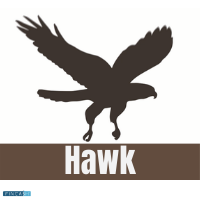
Hawk
What is a Hawk?
The hawk is an advisor or a policymaker who is concerned with interest rates related to fiscal policy. A hawk is also known as an Inflation hawk and they usually favour high-interest rates to keep inflation at bay. In simple words, they are concerned about the pressure brought to bear higher inflation rates than they are with Economic Growth.

The hawk is anyone who focuses on a specific aspect of an endeavour. For example, a budget hawk will give utmost importance to the federal budget and focuses on interest rates. Remember, that the opposite of a hawk is a dove. Doves are advisors or policymakers who prefer monetary policies involving lower interest rates and believe that these low-interest rates will lead to a growth in employment.
In Economics, these animal and bird names are used as descriptors for such employment. Bull and bear are also used to refer to markets affected by rising prices and by falling prices.
How are Interest Rates Determined?
In the U.S., at eight annual meetings, a group of the Federal Reserve examines economic indicators such as the consumer price index (CPI) and the producer price index (PPI). This determines if rates should go up or down. Anyone who supports high rates are haws and those supporting low-interest rates are doves.
Talk to our investment specialist
Interest Rates and Inflation
High-interest rates, in turn, make borrowing less appealing. This causes consumers to become less likely to make big purchases or take a loan. This kind of spending causes lowered demand, which keeps prices at bay and recent inflation.
High-interest rates also have benefits. This includes less borrowing ability, which in turn helps the consumer save money.
In sharp contrast, low-interest rates attract consumers for taking loans which causes huge purchases. This also causes inflation ultimately.
All efforts have been made to ensure the information provided here is accurate. However, no guarantees are made regarding correctness of data. Please verify with scheme information document before making any investment.




